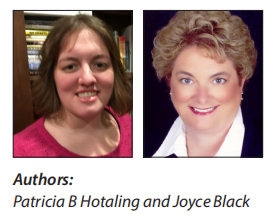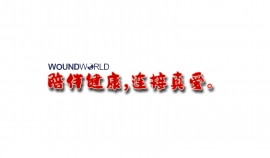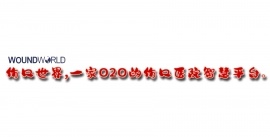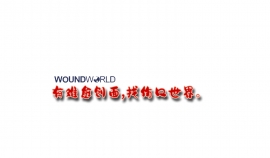文献精选

Patricia B Hotaling is a Clinical Assistant Professor of Nursing at the University of Nebraska Medical Center, in Nebraska, USA. She is an Adult-Gerontology Clinical Nurse Specialist;
Joyce Black is a Professor of Nursing at the University of Nebraska Medical Center, in Nebraska, USA; Fellow of the American Academy of Nursing and clinical editor of Wounds International
Andrea Damato, Aleksandra Rovnaya and Polly McGuigan
Abstract
The inclusion of resistance training in the care of patients with upper limb lymphoedema is an understudied developing concept. The study investigated the safety and effectiveness of adding a moderate/high intensity resisted exercise (RE) programme for 6 weeks on arm circumference, muscular strength and quality of life (QoL) measure in patients with breast cancer-related lymphoedema. This study included 35 patients with a history of breast cancer who were in phase two of their lymphoedema rehabilitation. They were assigned to either the intervention (n=18) or control (n=17) groups. The intervention consisted of resistance band exercises four times a week for 6 weeks. Limb circumference measurements, muscular strength, Disabilities of Arm, Shoulder, and Hand (DASH), Lower Extremity Functional Scale (LEFS) and Lymphoedema Quality of Life (LYMQOL) questionnaires were administered at baseline and at 6 weeks. After 6 weeks, the intervention group demonstrated statistically significant differences (p<0.01) in the DASH and LYMQOL scores. There was a significant change in UL and LL strength between both groups (p<0.05). Unexpectedly, there was a significant decrease in UL measurements in the hand, forearm, elbow and proximal arm in the intervention group (p<0.05). The results indicate that RE demonstrates a positive effect on arm function, symptoms and QoL without increasing arm volume in breast cancer-related lymphoedema.
Key words
Breast cancer, quality of life, resisted exercise
Andrea Damato is Physiotherapist, PhysioLympha. Aleksandra Rovnaya is Doctor, PhysioLympha. Polly McGuigan is Head of Department, Department for Health, University of Bath, Bath, UK. Declaration of interest: None.
Ethical approval: The study was approved by REACH (EP 20/21 103), University of Bath, UK and by the Russian Lymphology Association where the study was conducted.
Peta Tehan and Neil Piller
Peta Tehan is Lecturer in the Master of Wound Care,Department of Surgery, School of Clinical Sciences, Monash University, Victoria, Australia; Neil Piller is Director, Lymphoedema Clinical Research Unit, Department of Surgery, College of Medicine and Public Health, Flinders University, Adelaide, Australia
Amanda Pigott, Hiroo Suami, Andrew McCann and Megan Trevethan
Abstract
Head and neck lymphoedema occurs frequently after head and neck cancer treatment and causes physical and psychosocial disability. Imaging is not routinely used to diagnose or inform its conservative treatment. Indocyanine green (ICG) lymphography is used for these purposes in upper and lower limb lymphoedema.
Aim: The study aimed to explore the clinical potential of ICG lymphography in diagnosis and conservative management of head and neck lymphoedema.
Methods: Participants underwent a single examination with ICG lymphography. The tracer injection sites were determined by anatomic lymphatic territories. Presence of dermal backflow was used to diagnose lymphoedema. Imaging data were recorded using a bespoke audit tool to document lymphatic movement features and manual lymphatic drainage observations.
Results: Six participants underwent head and neck ICG lymphography. Lymphatic vessels and dermal backflow were visualised in all participants. Manual lymphatic drainage observations suggested all participants required very firm pressure to move the ICG dye through areas of dermal backflow, whereas only light pressure was required in areas with linear lymphatic vessel flow.
Conclusion: ICG lymphography can identify lymphatic structures and drainage patterns in the head and neck region and is considered a potential tool for diagnosis and conservative treatment planning for head and neck lymphoedema.
Key words:Head and neck cancer, lymphoedema, indocyanine green, fluorescence imaging
Amanda Pigott is Clinical Specialist, Department of Occupational Therapy, Princess Alexandra Hospital, Brisbane; and Honorary Research Fellow, University of Queensland, Brisbane, Australia. Hiroo Suami is Associate Professor, Australian Lymphoedema Education, Research and Treatment (ALERT) Program, Department of Human Sciences, Macquarie University, Sydney, Australia. Andrew McCann is Director, Department of Vascular Medicine, Princess Alexandra Hospital, Brisbane, Australia. Megan Trevethan is Clinical Specialist, Department of Occupational Therapy, Princess Alexandra Hospital, Brisbane; and PhD candidate, University of Queensland, Brisbane, Australia. Declaration of interest: None.
Acknowledgments: The authors acknowledge the participants who donated their time for this research.
Data availability: Contact corresponding author (该Email地址已收到反垃圾邮件插件保护。要显示它您需要在浏览器中启用JavaScript。) to discuss.
Funding : This work was supported by a grant from the PA Research Foundation 2019 Research Awards.




